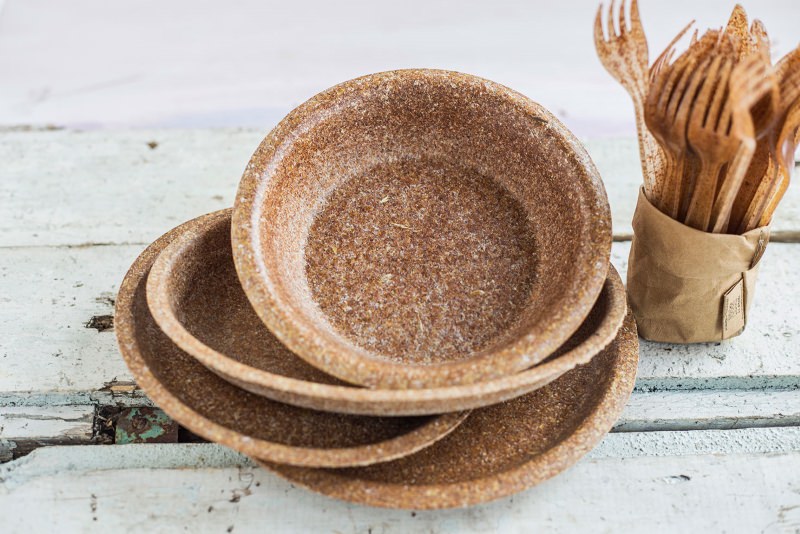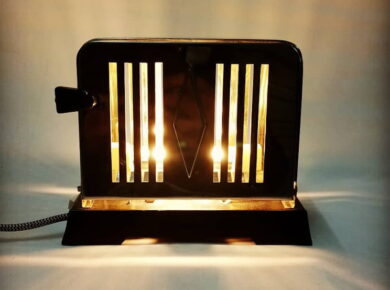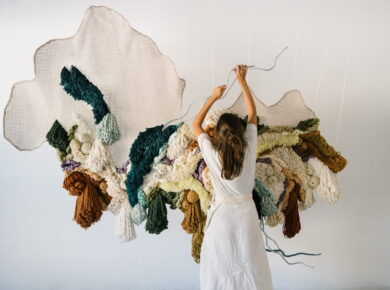Biotrem wants to reduce plastic waste with these edible wheat bran plates

| Biotrem is the first and the only maker of disposable and biodegradable tableware made of wheat bran. Their products are 100% natural and environmentally friendly. They use only pure, edible wheat bran and no other chemical compounds.
We talked to Artur Bednarz, from Biotrem, to find out more about this project. |
UniPlanet (UP): How did you come up with the idea to create edible tableware?
Although to most of international customers disposable tableware produced from wheat bran is something completely new, our technology is almost two decades old. The wheat bran tableware production process was invented by Mr. Jerzy Wysocki, whose family’s milling traditions date over a century back.
Bran is the hard outer-layers of cereal grain – wheat, rye or oat. It’s a by-product in the grain milling process – usually utilised as feed to animals. A small fraction of bran is also used by the food industry. But, unfortunately, by many, bran is considered as semi-waste.
It is also a huge problem for the milling industry, because weight-wise bran is just 30 percent of the grain, but volume-wise it’s almost 100 percent of the original, unprocessed grain. It requires storage space, and special handling as it can’t be stored longer than 14 days.
Mr. Wysocki – as practicing miller and as inventor in his heart – started thinking on how to turn bran (and especially wheat bran, which is the most common) into something more useful than just animal feed or compost.

UP: Why did you choose to use wheat bran?
Today’s Biotrem is a technology company developing an innovative production process of bio-based tableware and packaging. Our patented technology allows to manufacture disposable tableware from organic raw materials, such as wheat bran (which is widely available in our region), but also from cassava by-products, seagrass or even algae. Our products are not only safe, natural and biodegradable but also reduce the waste stream by utilizing bio-based by-products.
Biotrem is already selling its products on over 40 markets world-wide and we’re currently discussing further large-scale commercialization of our technology with a number of potential partners from North and South Americas, Asia and Europe.
With its own production facility and state-of-the-art machine park (developed internally and patent-protected), Biotrem delivers its products to mass-market clients including selected restaurant chains and premium retailers, either directly or through distributors. With over 5 million euros spent on R&D to date, the company is continuously working on new innovations in terms of shapes, raw materials and the production process.
Our main product line is fully biodegradable disposable tableware produced from the compressed wheat bran. The company’s offer also includes cutlery made from mix of PLA bioplastic and wheat bran.
Video from the production facility:
UP: In your opinion, why should we stop using disposable plastic plates and cutlery?
According to the latest studies, more than 500 billion units of disposable cups were sold across the globe in 2016. The global sales of disposable cups – made from plastic, paper or processed bio-materials – are expected to reach over 850 billion units towards the end of 2026.
In France and the United Kingdom alone consumers used around 7,7 billion of disposable cups in 2016. Less than 1% was recycled. The rest landed on landfills. The numbers for other disposables – plates, cutlery, packaging – are even more terrifying.
Common alternatives to plastic are organic or semi-organic pulp (husk, fibre, cellulose) or so-called bio-plastics. But it doesn’t make them more environmentally friendly if we consider the whole production process – including excavation or harvesting, processing, production, transpiration, utilisation and finally the waste management.
Wheat bran or cassava by-products are natural raw materials, already available in large volumes almost everywhere around the globe.
Biotrem tableware made of wheat bran is an excellent alternative to most of disposable dishware. They don’t stay for ages in landfills. They simply disappear within mere 30 days, turning in the home composter into a quality fertilizer for the future crops.
Video from the biodegradation lab test:
According to research carried out in 2015 by the Polish Packaging Research Institute, Biotrem tableware is characterised by its very low environmental burden. This is first and foremost due to the standardisation of the production process and the use of wheat bran as a natural raw material. Product life-cycle research has shown that about 66% of the environmental impact of Biotrem tableware is related to cultivation, transport, processing and production. This study shows that the share of the wheat bran itself in the environmental impact of Biotrem tableware is about 30-35%. In the case of conventional materials used in the manufacturing of disposable tableware, such as plastics and paper, this ranges from 60% to even 80%.
Thanks to the possibility of easy and rapid biodegradation through composting, Biotrem tableware also has a minimal share in the waste management.
Biotrem tableware exhibits much better functional performance when compared to its counterparts made of plastics and even paper. In addition, plastics – as a fossil and non-renewable material – have a significant environmental influence, especially in terms of their negative impact on the climate and fossil fuel use.
For Biotrem tableware the carbon footprint expressed in kg CO2 eq per 1 kg for the products ranged between 1.3 and 1.6 kg. In comparison – for a functionally equivalent weight of tableware made of the commonly used polystyrene – the carbon footprint value is as low as 8.5 kg CO2 eq.
In the near future, by making possible to manufacture our products everywhere across the globe, we can make our products even more environmentally friendly (and reduce the overall carbon footprint) by reducing the need of long-distance transportation.
UP: Is your wheat bran tableware suitable for high temperatures?
Our products are designed for short-term contact with processed and unprocessed food, either warm or cold. We advise to serve warm meals up to 15 minutes prior to consumption.
Our products are robust and stable. They can be comfortably and safely used at home, on a picnic, in the restaurant or during the open-air events.
Biotrem wheat bran tableware is tested for food contact safety, baking safety (up to 180 C), and microwave re-heating safety (up to 750 W). That’s something you couldn’t do with regular disposables made from plastic or paper. You can even bake a bread or roast a fish or meat in our plates or bowls.
And since our products are made of edible wheat bran, you can safely bite them. Unless you suffer from wheat allergies or celiac disease. Therefore, we are already working on a wheat-gluten-free version of our products.
UP: Where can we find more information about Biotrem and its wheat bran tableware?
To learn more about us and our products, please visit our website and follow our social media channels:
FB: biotrem
IG: biotrem_eu







